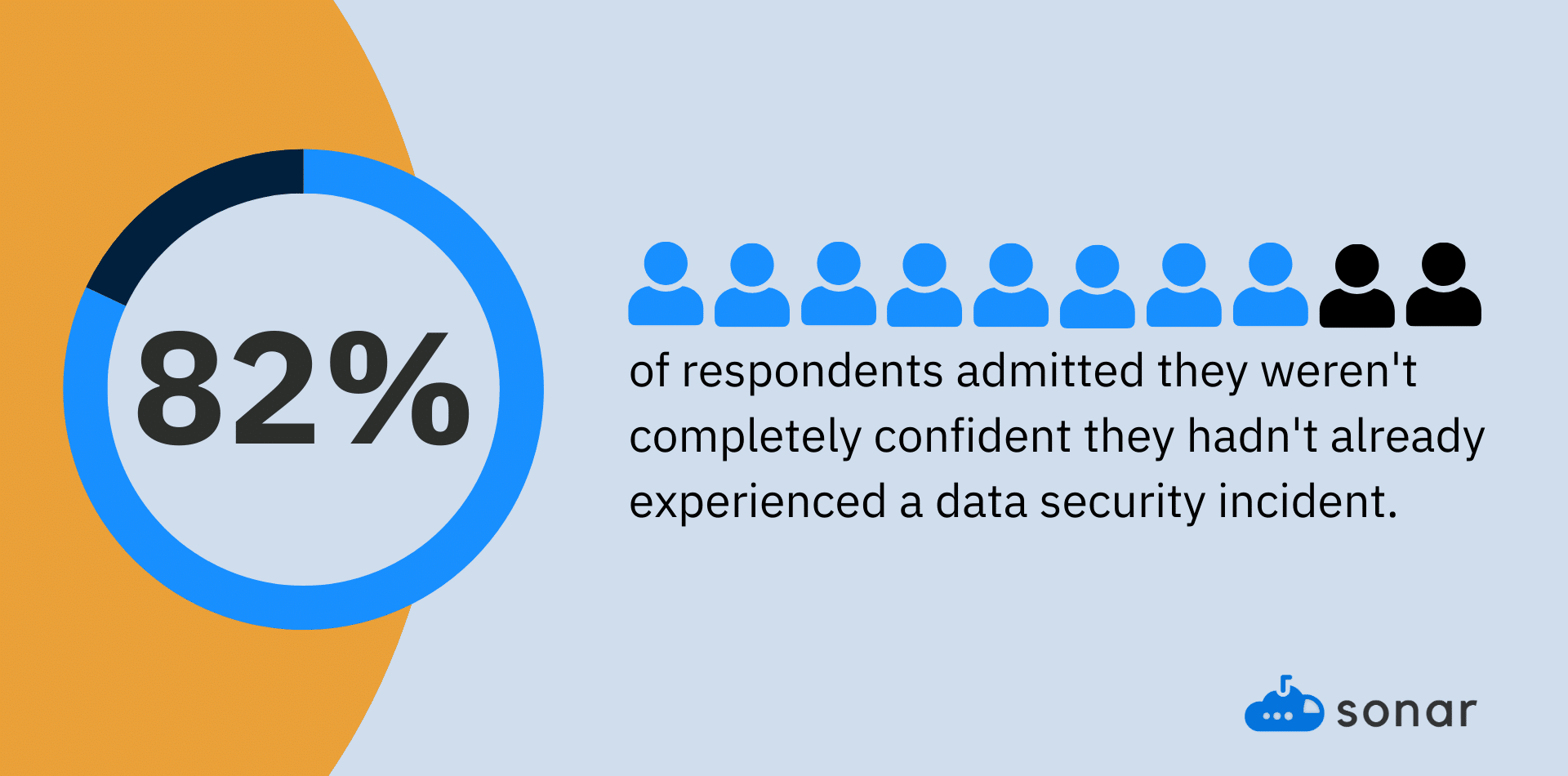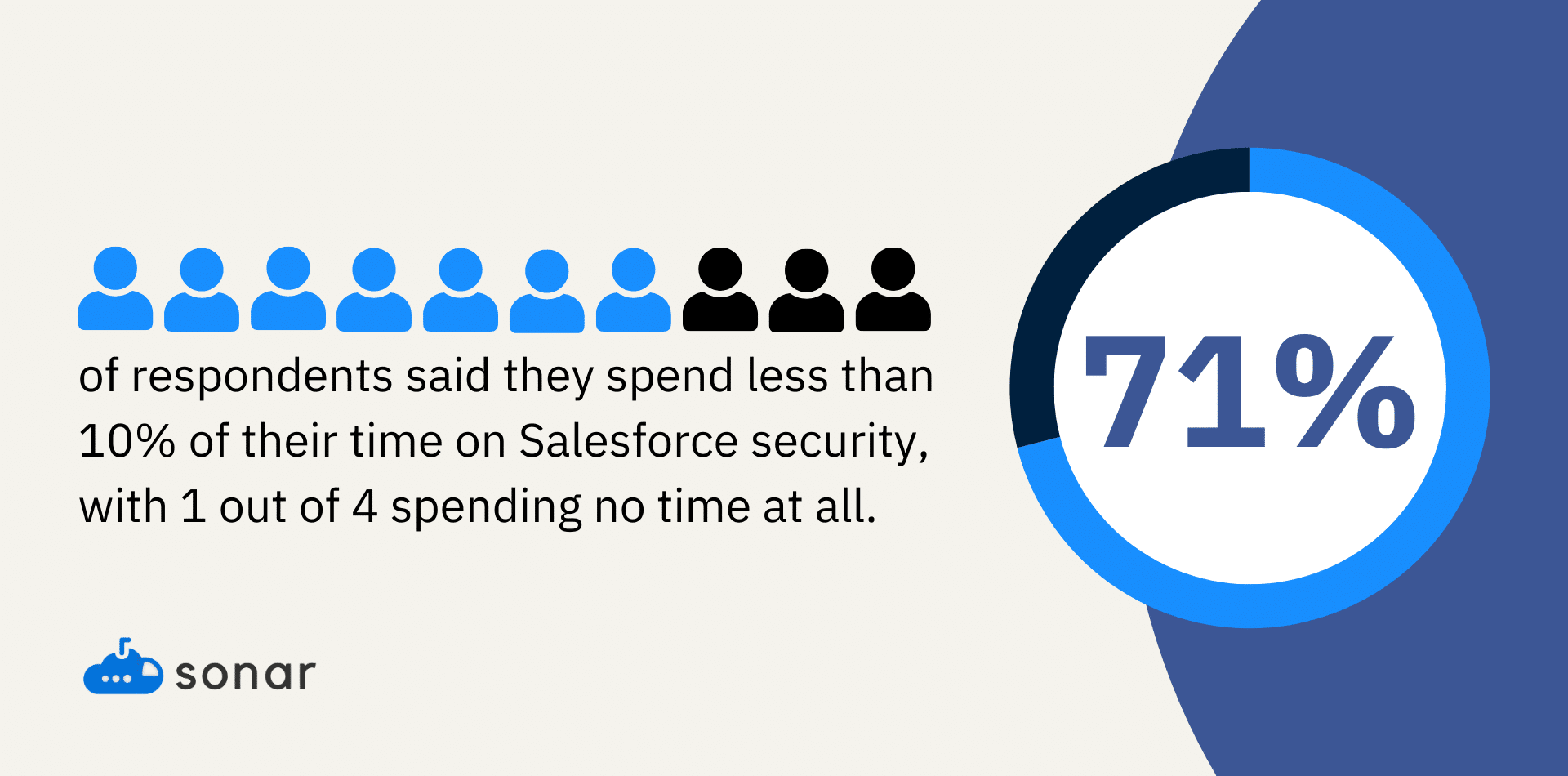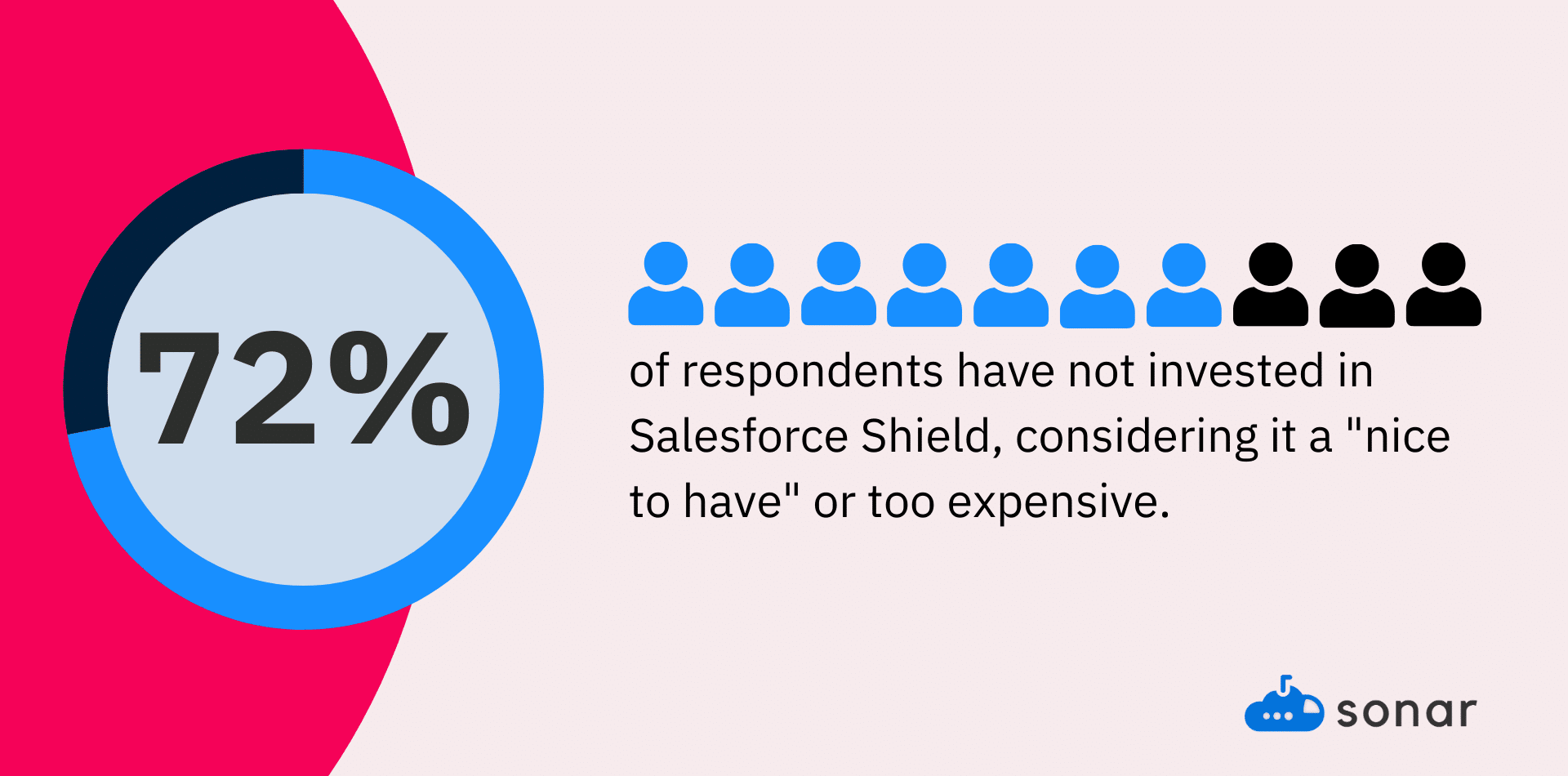Today’s headlines are filled with stories about data breaches, cyber attacks, and the hefty fines that come with them. In fact, over 6 billion data records have been breached this year alone. Knowing this, companies are investing heavily in security measures– allocating around 11% of their budgets to security expenditures. Yet, when it comes to Salesforce data security, most internal processes and safety protocols are being overlooked.
So, we asked the questions… Why is this? And better yet… Who specifically is responsible for Salesforce data security? To get a better understanding, we surveyed over 100 Operations professionals– the leaders who are charged with guarding your Salesforce data every single day.
The results of our survey confirmed our suspicions. That no one really knows who “owns” Salesforce security. In fact, those surveyed believed the responsibility was held either by IT or by their Salesforce Admins (a role that is often entry-level in the Salesforce management org chart). Our results also surfaced that respondents didn’t think their businesses took Salesforce security seriously, and as a result, these professionals only dedicated a small fraction of their time to keeping business sensitive data safe.
The data clearly highlights an immediate need for organizations to ensure Salesforce data security is taken seriously and that there is a shared responsibility across Ops and IT teams. Below, we’ll look at some of the survey findings and highlight where things might be falling through the cracks, and talk about how these two departments can join forces and make sure our Salesforce data is secure and our organizations are protected. Let’s dive in!
An Overlooked Priority: Salesforce Data Security
Our survey revealed that many Ops professionals assume IT Security are handling Salesforce security. Meanwhile, the day-to-day managers of the platform, who are closest to the data, often don’t have security top of mind. This disconnect can leave significant vulnerabilities in your Salesforce environment, potentially exposing your organization to severe consequences. Here’s what the study revealed about the state of Salesforce data security:
1. Unshared Responsibility and Policies
Our survey revealed a startling gap: only 1 out of 4 respondents had written data security policies for Salesforce. This indicates a significant lack of structured security practices. Without formal policies, it’s all too easy for crucial security measures to be overlooked or inconsistently applied. This absence of clear guidelines leaves Salesforce data vulnerable to breaches and unauthorized access, highlighting a major area where organizations need to step up their game.
2. Lack of Enforcement and Confidence
When it comes to enforcing those security policies, only half of our respondents felt their policies were strongly enforced. And, even more alarming 82% admitted they weren’t completely confident they hadn’t already experienced a data security incident. This reveals a disconnect between the belief in policy enforcement and actual confidence in security. It suggests that even when policies exist, they might not be as effective as we think, leading to a false sense of security that can have serious repercussions.
3. A Disconnect of Who Owns Salesforce Security
Our survey shed light on a significant disconnect in responsibility. Many Ops professionals believe that IT or Security should handle Salesforce security. And, it shows in how they are prioritizing their work. According to our survey, 71% of respondents said they spend less than 10% of their time on Salesforce security, with 1 out of 4 spending no time at all. This reality check shows that despite being the daily handlers of data, Ops teams are not focusing on security because they don’t believe it’s their responsibility, leaving a critical blind spot in data protection.
4. AI Integration Outpacing Security Prioritization
With 88% of Salesforce leaders considering AI for their tech stack this year, the integration of AI into Salesforce is rapidly increasing. However, integrations create risk. And security measures are not keeping pace. While AI offers exciting opportunities for sales intelligence and prospecting, it also introduces new security risks. The rush to adopt AI without corresponding security enhancements could expose organizations to significant vulnerabilities, making it essential to prioritize security in parallel with AI adoption.
5. The Cost of Neglect
Our findings show that 72% of respondents have not invested in Salesforce Shield, considering it a “nice to have” or too expensive. This underinvestment in specialized security solutions can lead to significant vulnerabilities. The cost of neglecting Salesforce security can be high, with potential real-world impacts including data breaches, financial loss, and reputational damage. For example, a company that overlooks Salesforce security could suffer a breach, resulting in lost customer trust and substantial fines. It’s clear that prioritizing and investing in robust security measures is not just a good practice—it’s a necessity to protect the organization’s future.
Bridging the Gap: A Call for Collaboration
To turn these insights into action, it’s essential for Ops teams and security teams to collaborate and bridge the gap in Salesforce security. By working together, these two teams can build a robust strategy that ensures data protection and operational efficiency. Here are some practical steps to help both teams unite and enhance Salesforce security within your organization.
Acknowledge Salesforce Security is a Shared Responsibility
Ensuring Salesforce data security isn’t just the job of IT or the CISO—it’s a shared responsibility that requires the active participation of both CISOs and Ops teams. For effective data protection, both parties need to be on the same page, working together to establish and maintain robust security practices. Clear policies, regular training, and ongoing communication are crucial to fostering this collaboration. By sharing the responsibility, both teams can leverage their unique strengths to create a secure and resilient Salesforce environment.
Actionable Steps for Building Effective Management & Shared Responsibility of Salesforce Data Security
- Develop clear policies: The first step in securing Salesforce data is creating and enforcing written data security policies. These policies should outline the specific measures and protocols that need to be followed, ensuring that everyone in the organization understands their role in maintaining security. Clear guidelines and ongoing, regular training help prevent misunderstandings and ensure consistency in how security is managed.
- Collaborative approach: Security is a team effort. CISOs and Ops teams need to collaborate closely on developing and implementing security measures. Regular meetings, joint planning sessions, and shared responsibilities can help ensure that both teams are aligned and working towards the same goals. This collaborative approach fosters a culture of security awareness and shared accountability.
- Invest in security tools: Investing in robust security tools, such as Salesforce Shield, is essential despite the cost concerns. These tools offer advanced features and protections that are crucial for maintaining data security. In addition, consider leveraging Sonar Pulse, which helps teams collaborate and monitor Salesforce security across the organization and its integrated tech stack. Sonar Pulse provides real-time insights and alerts, enabling teams to quickly identify and address security issues, ensuring a comprehensive approach to data protection. By making these investments, organizations can significantly reduce their risk of data breaches and ensure compliance with regulatory requirements. See it in action here.
- Regular training and audits: Continuous training for Ops teams and regular security audits are key to maintaining a high level of security. Training keeps team members informed about the latest security threats and best practices, while audits help identify potential vulnerabilities and areas for improvement. Regularly scheduled audits and training sessions ensure that security remains a top priority and that teams are prepared to respond to any threats.
By following these actionable steps, Ops teams and CISOs can work together to build a secure and resilient Salesforce environment. This collaborative approach not only enhances data security but also strengthens the overall operational efficiency of the organization.
Conclusion: Securing Salesforce Together
What our survey revealed was a clear gap in the average organization’s Salesforce security prioritization. However, this challenge presents an opportunity for growth and collaboration. By recognizing that Salesforce security is a shared responsibility, CISOs and Ops teams can work together to create a secure and resilient Salesforce environment. Clear policies, regular training, and ongoing communication are essential.
Investing in robust security tools and leveraging solutions like Sonar Pulse can bridge the gap. Sonar Pulse helps teams collaborate and monitor Salesforce security across the organization, providing real-time insights and alerts to quickly address issues. By working together, Ops teams and CISOs can create a secure, resilient Salesforce environment, enhancing both data protection and operational efficiency. Prioritize Salesforce security today and discover how Sonar Pulse can safeguard your data.




